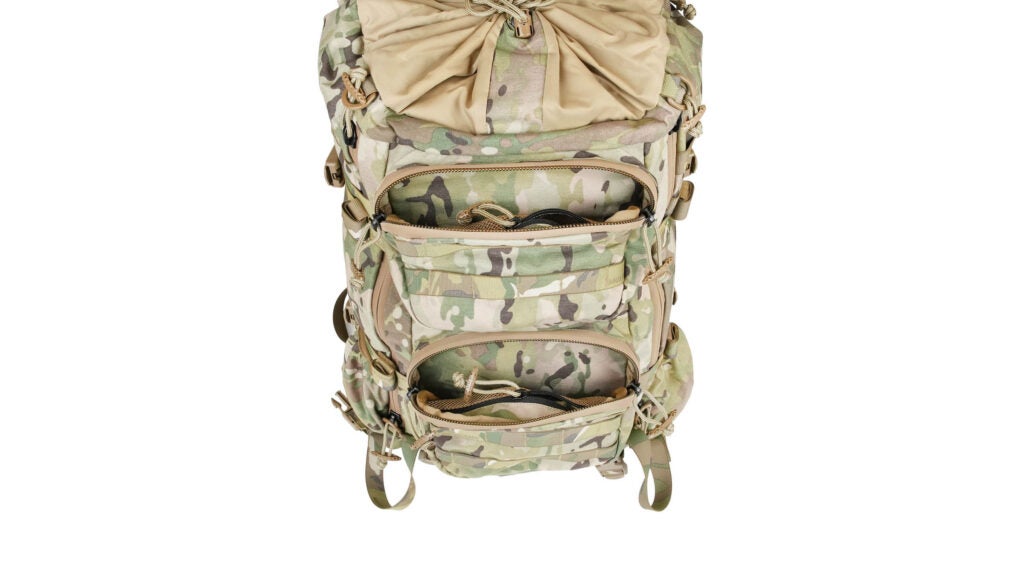Products You May Like
Get full access to Outside Learn, our online education hub featuring in-depth fitness, nutrition, and adventure courses and more than 2,000 instructional videos when you sign up for Outside+
Sign up for Outside+ today.
Little-known fact: One of your favorite outdoor brands is likely making gear for the military. From Arc’teryx to Polartec, a large slice of the gear industry takes on massive military contracts, turning out everything from backpacks to boots for the U.S. (though it doesn’t always end up in the hands of the people they intend it to.)
While I was working on a Backpacker story on the military gear industry, I started to wonder: Just how good was this taxpayer-funded gear? Some of the prices were astronomical, others were in line with high-end outdoor gear. I wanted to see if this was just the same product in multicam, or if companies were building more features into these products specifically for the military.
Testing some of that military gear out would let me answer another question as well: Is made-in-the-U.S.A. gear really better than what companies make abroad? Thanks to something called the Berry Amendment, a piece of legislation that has been added to defense spending bills since 1941 and passed into law in 1994, almost all food, clothing, tents, materials, and tools made for the U.S. military must be manufactured in the United States. Companies often say that while consumers claim to want their gear made locally, they are not willing to pay for it. Testing out some Berry-compliant gear seemed like a good way to see what we are missing when we buy mostly foreign-sourced outdoor gear.
I opted for more or less a full outfit featuring some of the brands mentioned in the story. From top to toe that was a Mystery Ranch Blackjack 50 pack, a civilian version of their Special Operations pack, Polartec’s Alpha Waffle Top, Beyond clothing’s Berry-compliant and non-Berry-compliant versions of a warm DWR hoodie and their Rig Light Pant, and Danner’s Reckoning tactical boot. Where possible I tried to get non-multicam versions; that look isn’t really my vibe. The verdict? I found a lot to like—assuming that you can afford it.
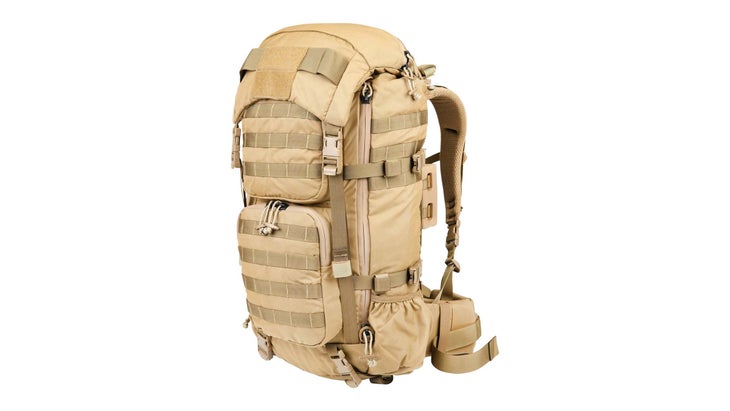
I first started backpacking with a military pack that I borrowed from ROTC. It was bulky, heavy, and uncomfortable compared to the packs my friends got from outdoor stores. But it was free, which was enough for me at the time.
The Mystery Ranch Blackjack is a distinct improvement, but unless you’re deploying with U.S. Special Forces, you’ll have to pay for it. I tested this pack over two 20-ish mile days on the PCT in triple-digit temperatures and appreciated the side bladder pockets, which easily allowed me to carry two bladders and swap between them. I also took it on a recent reporting trip to Thailand, a winter overnighter in SoCal’s Laguna mountains, and a series of smaller excursions where I needed to haul gear uphill. Fifty liters tends to be enough capacity for me on most trips, and although this pack lacks Mystery Ranch’s signature y-shaped zipper, I found the side access zippers very handy.
Unlike civilian packs ,this bag features MOLLE attachments, which allow for easy attachment of accessory pouches to customize your pack. The Blackjack 50 comes with two accessory pouches, each with a zippered mesh pocket on the inside as well as a large compartment on the top flap. That’s enough for me on a short trip, but I did take advantage of the MOLLE attachments to clip my first aid kit onto the bag and have it easily accessible.
Another plus is how wide of a range of sizes each pack fits—an important feature for government-issue equipment that multiple soldiers may end up using. Thanks to a unique frame which uses a plastic insert, it adjusted well to my medium-size torso, and I found I could comfortably haul all of my gear and 7 liters of water in comfort.
The Blackjack 50 is made to haul military loadouts in excess of 100 pounds, and it feels like it. At 7 pounds, it’s not very light, but it does feel like it would last forever. If you like your outdoor gear brightly-colored, you may be disappointed: The Blackjack only comes in multicam and coyote, though there is a hook-and-loop panel where you can add a colorful morale patch.
Overall, I liked this pack a lot, and it has become my go-to bag for just about everything. I travel a lot and always fret about my ultralight bags getting torn up by baggage handlers, but I don’t worry about this one. I really liked the MOLLE attachments: I can use things like Peak Design’s excellent camera clip or my individual first aid kit and keep everything packed in the pouches that I switch between this pack and my daypack. While I might not use it for fast-and-light missions, and the $750 price tag is a little hard to swallow, this would be my go-to for an indestructible pack.
$750 , S-XXL
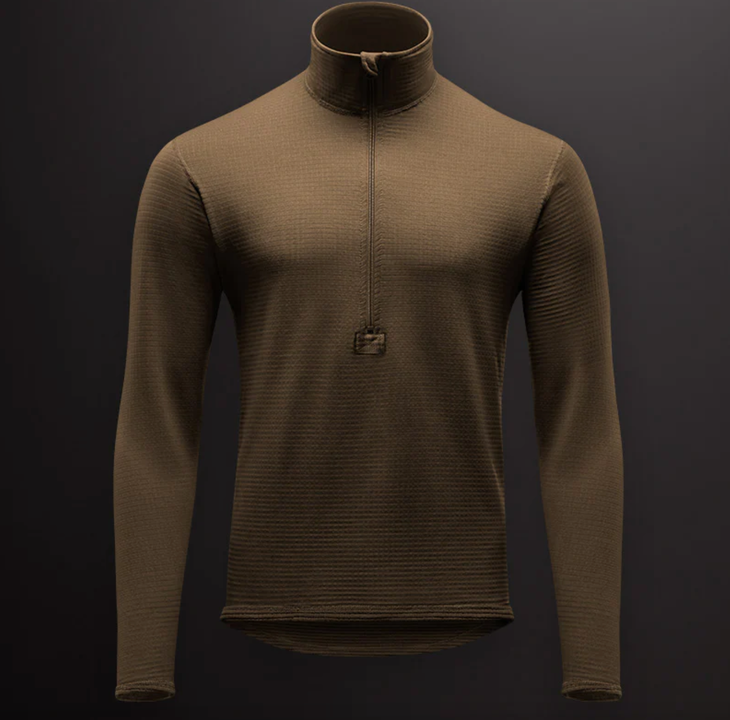
Polartec originally developed its Alpha insulation for the military. Down is bulky and does not interact well with body armor or wet weather, so the armed forces wanted something that could get wet and quickly dry out, breathed well under a plate carrier but also kept troops warm on the coldest places on earth.
Colloquially called a “waffle top” thanks to the grid knit pattern, this is a popular item among service people, and has become a favorite on the civilian market as well. I can see why: The soft fabric interior, high neck, and thumb loops on this piece make it a great cold weather baselayer. I run cold, and on chilly walks I felt great with this and a warm shell down to about freezing. The Alpha layer slipped comfortably under a down jacket for really cold temperatures; I also climbed in the waffle top and really appreciated the thumb loops on belay duty.
Sizing does run large—even my small was a little baggy on my 6’3” frame— but you can customize length as well as size, which is great for tall, skinny people like me. At $69 it is very reasonably priced compared to other alternatives.
Alpha really is a wonder fabric: I’m pretty sensitive to textures and the soft fleecy Alpha is one of my favorite warm baselayers to wear next to my skin with none of the scratchiness of wool. Again, this only comes in olive drab, but the plain green color doesn’t scream “military” like camo does.
S69 XS-XXL Short, regular, or long
Beyond Kyros Aptus and Axios Stretch Alpha L5 fleece-Lined Hoodies
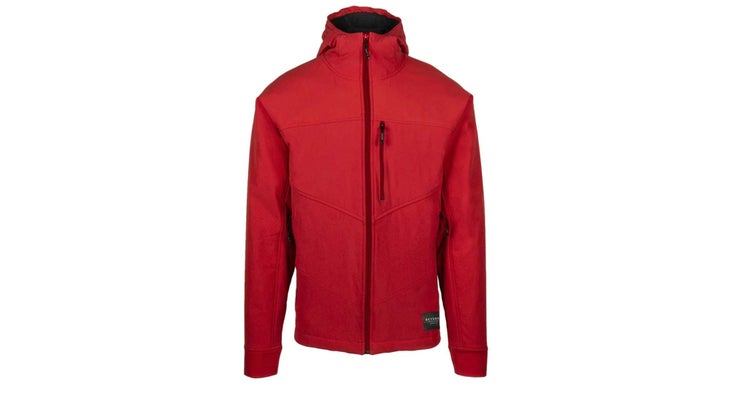
If, like me, you get overwhelmed trying to pack for a week on the trail in varied temperatures, military-style apparel has the distinct advantage of being designed as a multi-piece system for just about any climate on earth. Beyond’s Axios (made in the U.S.A. to Berry Amendment standards) and Kyros (made outside the U.S.A.) lines have a handy tool suggesting what to wear when static or active in a range of conditions and temperatures on their website. I’ve found it to work pretty well and really ease the stress of packing light while staying prepared.
The Aptus and Stretch Alpha hoodies both fit into position 5 in the layering system, softshell outer layers. They are both fleece-lined, DWR coated, and suitable for temperatures from freezing to the low 50s depending on how you layer underneath them. Both have fleecy hand pockets, internal chest pockets and insulated hoods. The big difference is price: The Berry compliance in the Aptus will cost you about $175 extra.
Both of these hoodies pack pretty impressive warmth for their weight, to the point where they mostly replaced down jackets for me over the winter in Colorado, California, and Wyoming, though I still needed to bust out the puffy in the coldest conditions or when I wasn’t moving around. They’re easy to wash and, unlike a lot of down jackets, don’t mind getting wet. I also loved the soft fleece lining against my skin when I threw them on to warm up after a cold morning surf lesson.
Of all the gear I tested, these are the least “tactical” looking. They come in bright red, blue, and grey as well as tan, and they really don’t have any unique tactical features. They’re just damn good outdoor jackets from a brand you might have overlooked because most of their sales are to the government. If they have a downside, it’s once again price: At $395 and $225 respectively they are not cheap. But if you go out a lot in the cold and wet, they could easily replace a down jacket/shell combination, and after months of use mine look almost brand new.
Aptus: $225 S-2XL regular or long
Alpha: $395 S- @XL regular or long
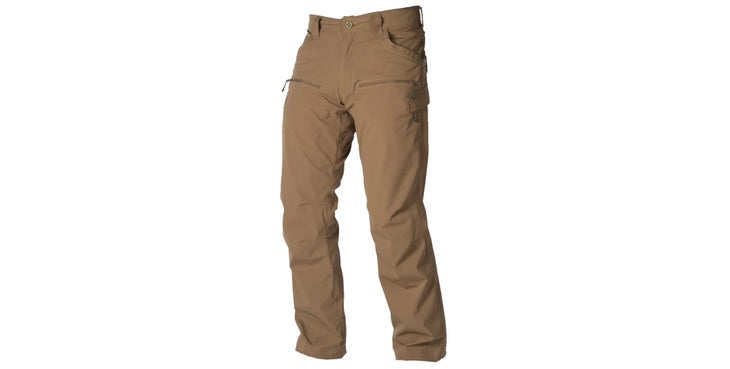
The Rig Light is a lightweight DWR pant that stretches enough to rock climb in comfortably, but it’s much more durable than that description suggests. The pants are water-resistant, but they don’t feel “crackly” or fragile like other waterproof pants, nor did they ever feel too hot in triple-digit temperatures, especially with the mesh pockets unzipped to allow airflow. The articulated knees were tough enough that I never had to worry about tearing them when I knelt down to take a photo. The DWR fabric really comes into its own when the weather turns and my usual hiking pants would be soaked or allow the wind to cut through. These pants shrugged off all the rain and wind I tested them in. Overall, these were as close to an ideal pair of hiking pants as I’ve ever tried.
Of course, being tactical pants, there are more pockets than a reasonable person could use: In addition to normal front pockets there are thigh pockets and cargo pockets, all zip-sealed. The thigh pockets are mesh lined, so they can serve double duty as vents on hot days.
Again, the big downside is price: $275 is an awful lot of money to spend on pants that you are going to get dirty if you use them right. But a lot of that is the cost of making them in the U.S., and if my Twitter timeline during Outdoor Retailer is anything to go by, there is pretty consistent demand for American-made gear. You could also pretty easily spend this much on Arc’teryx pants, and I thought these were comparable quality, and offered a choice of leg lengths besides. Like all the Beyond gear I tested, the Rig Light pants do come in normal colors, so you can hit the trail without looking like you’ve gone AWOL. Sizing runs a little large so if you find yourself between waist sizes, opt for the smaller pair.
$275 waist 30-42, regular or long leg
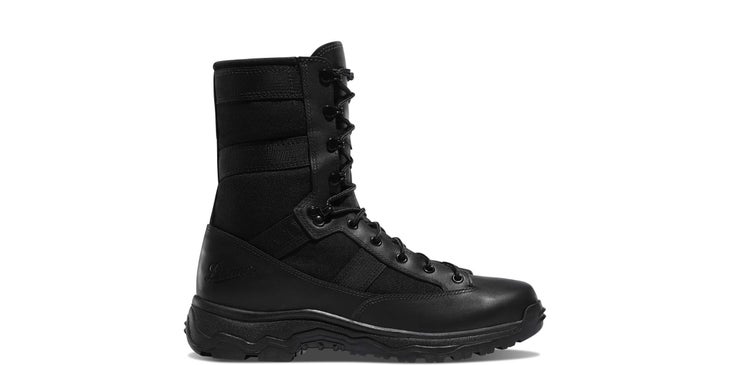
You’ve probably seen boots like these before, if only in news photos: Thousands of pairs have been deployed in the two decades of U.S. involvement in Afghanistan and Iraq, and thousands more have graced the feet of dudes who are into wearing tactical gear for fun. Tactical boots are pretty different from hikers: The ankle cuffs come up much higher than even high-top hiking boots, and they’re made of a more flexible suede-type material. They need to be robust enough to support a soldier carrying heavy loads over long distances and protect their feet and ankles along the way, but they also need to be light and flexible enough to sprint in in a firefight. Despite this, they’re not at all bad for hiking.
Danner’s Reckoning Hot boots are Berry-compliant and obviously designed with the desert environments where the U.S. has spent much of the past 20 years fighting. I found that once I put in my orthotic insoles the boots felt really comfortable, with no need to break in the leather and nylon upper. The Vibram outsole is as grippy as you’d expect and the flexible upper doesn’t provide as much solid ankle support and protection as my usual Vasque boots, but they do offer much more flexibility for running and scrambling. After experiencing some initial hot spots, I found that I could use different lacing patterns to fine-tune them for comfort. I went down half a size compared to my usual 45.5 boots so it’s worth trying these on before you buy, although Danner does have a handy feature on their site to help you compare the fit to other boots they make.
The Reckoning has become a regular companion on my desert hikes near my home in southern California in the summer, as it’s notably cooler and better vented than most of my waterproof hiking boots. They also dry much faster when they do get wet. If you hike a lot in hot weather and want a little more support than a trail shoe gives but a bit less bulk and structure than a hiking boot, these are worth a try.
$260 Size Men’s 6-16 with half sizes up to 12 and an EE extra wide option in all sizes
